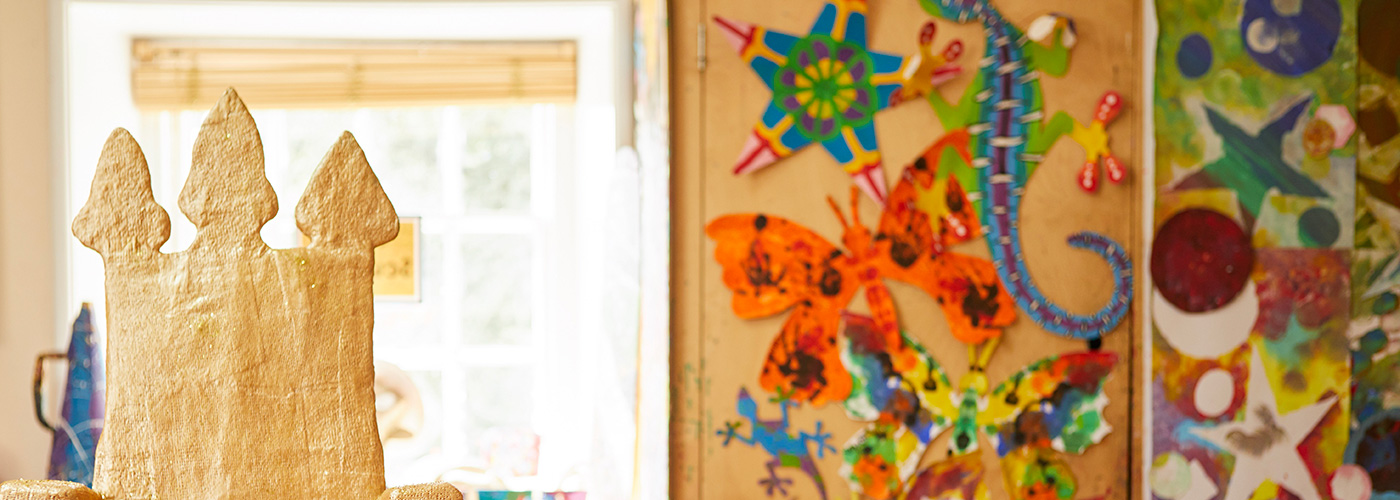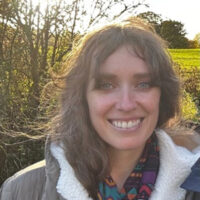Human and Non-Human Animal Relationships in Education: Power and Violence
Date 20 March 2023
This reflective piece utilises storytelling methodology to recount and analyse one child’s love for a snail she had found one wet morning on the doorstep of our rural preschool setting.

As an Early Years teacher and environmentalist, I’m often working alongside children to develop their understanding of the natural world and what it means to be human in a more than human world. This reflective piece utilises storytelling methodology to recount and analyse one child’s love for a snail she had found one wet morning on the doorstep of our rural preschool setting. Her perspective is recounted without judgement, but it does raise questions about societal and educational practices involving non-humans. It is time for a new model of teaching that decentres the human from educational discourse. By shifting our collective worldview away from human exceptionalism (Hohti & Tammi, 2019), and towards a web of reverence (O’Connell, 2014) for the natural world, we may be able to create a more ecologically literate curriculum. To do this would impart a worldview that values non-human life, aiming to halt the rapidly increasing loss of biodiversity (Goulson, 2021) that is threatening the future of our children.
A child came into my setting one morning, it had been raining overnight and the air was wet with the sort of dampness that brings out all the worms. She was holding something in her hand, fist closed tight and close to her chest, clearly something very precious. I assumed it was a twig, or a leaf, or a stone, the kinds of things children often collect in what Rautio calls “autotelic material practices” (2013:1): a child’s way of connecting with nature in a world divided into Human and Other. My own children have sacred piles of Interesting Things around the house – dried rosehips, piles of rocks, sticks wound with bindweed. I make jokes about it with other parents: aren’t kids funny, but actually I’m just the same. My kitchen is full of ground plantain seeds, dried yarrow and dandelion stems hanging from hooks on the wall. My husband makes jokes about me: isn’t she strange. But these practices help us to feel connected to the natural world. So when this child came into nursery carrying something small and precious, I didn’t give it much thought beyond aren’t children funny.
I was with a group of children, pouring rice into cups and trying to get them to think about how many scoops of rice would fill up their cup, when I heard screaming from the other side of the room. A colleague called to me “she won’t let it go.” Other children were crowded around her and she was still squeezing her treasure in her fist, holding her arm against her body like it was broken. “She’s got a snail” someone said. By this point the girl was inconsolable, terrified someone was going to take her treasure from her. I cuddled her up and carried her outside where it was quiet and private. The children inside carried on counting spoons full of rice. The snail in the girl’s hand was crushed. She didn’t know what to do, she showed me but withdrew her hand if I got too close. She knew the snail was hurt, but it was hers and she wanted it anyway. She loved her snail. Spannring (2019:1) writes about the “power and violence that permeate human-animal relationships” and it is this story that really sticks with me when I think about power and violence, and how we are socialised to relate to the world. She didn’t mean to be violent, she simply loved her snail, but love that includes ownership is violence, no matter how well intentioned. This one child’s destructive love is indicative of a wider problem, the problem doesn’t lie with the individual child, the problem, I believe, is caused by an anthropocentric society that teaches its youngest members that if you love something you should intervene in its life, take ownership of it, keep it in a box.
So many educational practices instil a divide between us and them. Humans, and non-humans, less-than-humans. By taking children to the zoo we run the risk of teaching them that non-human animals belong to us. By hatching chicks in incubators we show children that we are more powerful, and can use that power to control others. By having class pets we teach children that love is equivalent to ownership. These practices within our curriculums create, as Spannring describes, “an unsurpassable gulf between the human proper… and the partially human, subhuman and non-human others” (2019:1). Consequentially, we see “marginalisation, exploitation and annihilation” (2019:1) of those sub-humans, those non-humans, those not-quite-on-parr-with-us humans. We have seen this happen throughout history and we see it happening still.
In 1960 Rachel Carson wrote Silent Spring, a book about the interconnectedness of life, and how every plant, insect and animal has a purpose and contributes to the web of ecology vital for the survival of the planet and everything on it. In 1979 James Lovelock wrote Gaia, a view of the planet as one vast, self-regulatory organism. The planet now is on the verge of collapse due to human-centric rather than eco-centric organisational and individual practices, and yet we are still taking children to zoos. We are still educating children that every plant and animal fits into a hierarchy, and humans are at the top. Except if there is a top, then we must also categorise humans in a hierarchy, and who sits at the top of a human hierarchy?
I read a book recently about alloparenting: the act of group child rearing seen in some human and non-human animals (Blaffer-Hrdy, 2009). In the book was a quote from Peter Hobson: “I sat gazing at a chimpanzee… I could not connect. I was reminded of the experience one sometimes gets when relating to a child with autism… it was as if this chimp was not at home, mentally speaking” (2004:270). Hobson has clearly demonstrated that there is an ordered and neat view of humanity, who is and isn’t “at home”. Perhaps we need to look at how we have created our home. Is our collective home created by and for sentient beings of all species and perspectives? Is there space for creatures of all kinds? Are our human institutions created by and for humans of all kinds, encompassing vast ranges of neurodiversity and socio-cultural backgrounds?
How we value plants and non-human animals is “shaped by the formative influence of experience, learning and culture” (Kellert, 1996:9). Education has sought to give us humanity, to raise humans above the instinctive thinking and behaviour that we share with non-human animals, to bind our thinking to scientific and formal regimes (Rousseau, 1991/1776). Hohti & Tammi (2019) argue that it is this legacy that has engrained “human exceptionalism” (2019:173) into school culture and curricular.
Spannring says that formal education has severed the non-linear ties that bind us to non-human animals (2019). Goulson has followed on in 2021 from where Carson left off in 1960, with his book Silent Earth. In it, he warns about insect decline due to human practices and the devastating effect this is having and will continue to have on the natural world. If we are not bound to insects then we are not bound to the natural world. We’re adrift. One human island floating to anther human island, making temporary moorings. In the words of David Orr, “we are a part of, not apart from, the natural world” (2005:xi). That’s why children collect stones. Stones weigh them down, tether them to the earth, allow them to slot temporarily back into their natural place in the world, as a being whose value is not determined only by their humanness, but by their ability to be uniquely them. To build webs of reverence (O’Connell, 2014), respect and compassion with the more-then-human world.
References:
- Blaffer Hrdy, S (2009) Mothers and Others. London: Harvard University Press.
- Carson, R (2000) Silent Spring. London: Penguin Books (1962).
- Hobson, P (2004) The cradle of thought: Exploring the origins of thinking. Oxford: Oxford University Press.
- Hohti, R & Tammi, T (2019) The greenhouse effect: Multi-species childhood and non-innocent relations of care. Childhood 26(2) pp. 169-185.
- Kellert, S (1997) The Value of life: Biological diversity and human society. Washington, DC: Island Press.
- Lovelock, J (1979) Gaia: a new look at life on Earth. Oxford: Oxford University Press.
- O’Connell, P (2014) A simplified framework for 21st century leader development. The Leadership Quarterly. 25. pp. 183-203.
- Orr, D (2005) Foreword in Stone, M & Barlow, Z (ed.) Ecological literacy: Educating children for a sustainable world. San Francisco: Sierra Club Books.
- Rautio, P (2013) Children who carry stones in their pockets: on autotelic material practices in everyday life. Children’s Geographies. 11(4) pp 394-408.
- Spannring, R (2019) Ecological citizenship education and the consumption of animal subjectivity. Education Sciences: 9 (41) pp 1-20.
